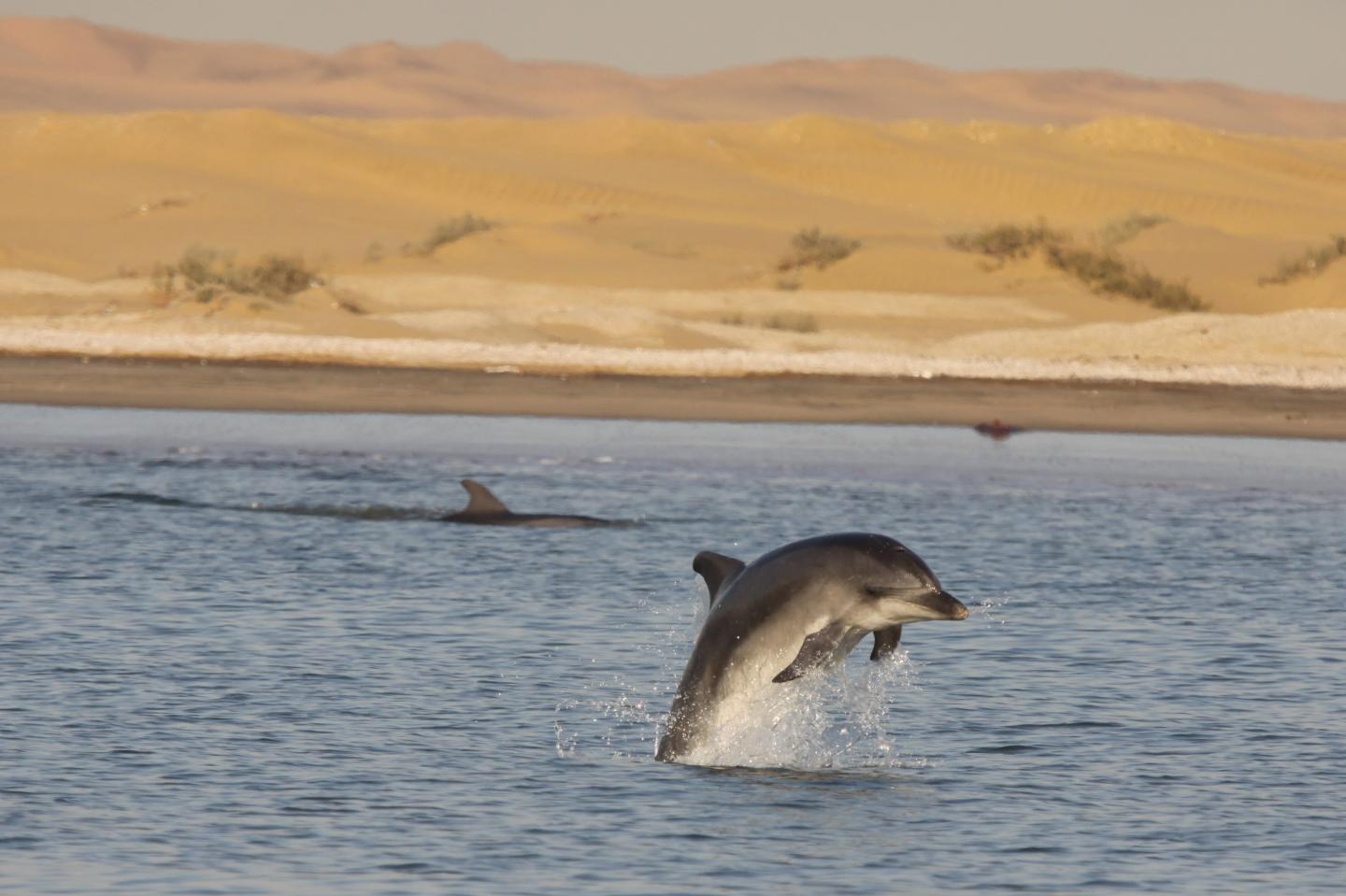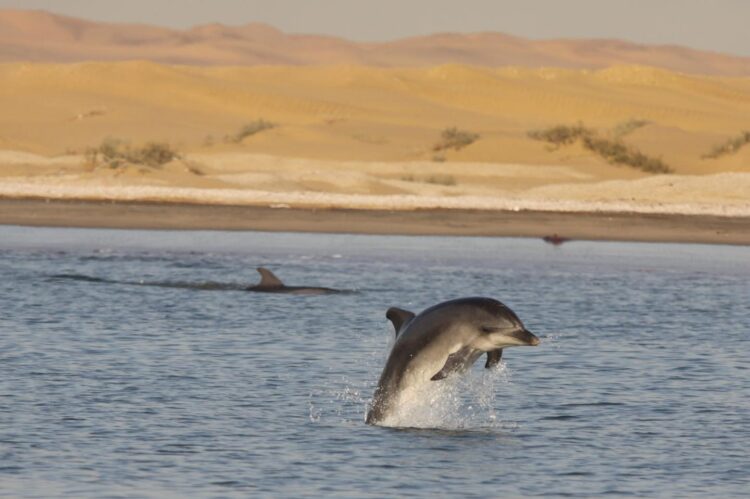Call of the wild: individual dolphin calls used to estimate population size and movement in the wild

Credit: Dr Tess Gridley
An international team of scientists has succeeded in using the signature whistles of individual bottlenose dolphins off the coast of Namibia to estimate the size of the population and track their movement.
The research, led by Stellenbosch University and the University of Plymouth, marks the first time that acoustic monitoring has been used in place of photographs to generate abundance estimates of dolphin populations.
Writing in the Journal of Mammalogy, researchers say they are excited by the positive results yielded by the method, as the number of dolphins estimated was almost exactly the same as estimated through the more traditional photographic mark-recapture method.
They are now working to refine the technique, in the hope it can be used to track other species – with a current focus on endangered species such as humpback dolphins.
Quicker information processing and advances in statistical analysis mean in the future that automated detection of individually distinctive calls could be possible. This can generate important information on individual animals and would be particularly useful for small, threatened populations where every individual counts.
“The capture-recapture of individually distinctive signature whistles has not been attempted before,” says the paper’s senior author Dr Tess Gridley, Co-Director of Sea Search and the Namibian Dolphin Project and a postdoctoral fellow in the Department of Botany and Zoology at SU. “The dolphins use these sounds throughout life and each has its own unique whistle. Therefore, by recording signature whistles over time and in different places we can calculate where animals are moving to and how many animals there are in a population.”
Working with Dr Simon Elwen of Stellenbosch University, the Namibian Dolphin Project has been researching Namibia’s resident bottlenose dolphins for the past 12 years, and built up a catalogue of more than 55 signature whistles dating back to 2009.
This particular study was led by Emma Longden, who began the project during her BSc (Hons) Marine Biology degree at the University of Plymouth. As an undergraduate, Emma completed an internship with the Namibia Dolphin Project for a month in 2016, and returned again in 2018 to complete work on the mark-recapture project.
She analysed more than 4000 hours of acoustic data from four hydrophones positioned along the coast south and north of Walvis Bay, Namibia, during the first six months of 2016.
All in all, they identified 204 acoustic encounters, 50 of which contained signature whistle types. From these encounters, 53 signature whistle types were identified; 40 were in an existing catalogue developed in 2014 for the Walvis Bay bottlenose dolphin population, and 13 were newly identified.
Of the 53 signature whistle types identified, 43% were captured only once, whereas the majority (57%) were recaptured twice or more.
“One of the great things about bioacoustics is that you can leave a hydrophone in the water for weeks at a time and collect so much data without interfering with the lives of the animals you are studying,” says Emma, whose work on the project was also supervised by Dr Clare Embling, Associate Professor of Marine Ecology at the University of Plymouth.
Future research includes the work undertaken by PhD student Sasha Dines from Stellenbosch University to further refine the technique to better understand the population of endangered humpback dolphins in South Africa. Another PhD student, Jack Fearey from the University of Cape Town, is continuing to conduct research along the Namibian Coast.
For editors
* The article was authored by Emma G. Longden, Simon H. Elwen, Barry McGovern, Bridget S. James, Clare B Embling and Tess Gridley and is available online at https:/
More about bottlenose dolphins’ use of sound
From the day they are born, bottlenose dolphins produce high frequency whistles. During learning and practice in the first year of life, these whistles develop into individually distinct signature whistles and each animal has its own unique call throughout life. Once learned, signature whistles act like a name and are used to help animals stay in contact and to address each other when communicating under the water.
These signature whistles help animals keep in contact if they become separated, they are exchanged before groups meet (as a kind of greeting) and they can copy each other’s whistles to address each other (in the same way humans use names). They are therefore friendly sounds and used between animals that are well acquainted – such as group members and mothers to their calves.
###
More about the Namibia Dolphin Project
The Namibia Dolphin Project is a research and conservation project operating in Walvis Bay and Luderitz in Namibia. It is managed as part of the Sea Search Research and Conservation non-profit group and involves scientists and specialists from various South African and international universities and institutes. Interested students can intern with the Namibian Dolphin Project and Sea Search to gain important fieldwork skills.
Media Contact
Tess Gridley
[email protected]
Original Source
http://www.
Related Journal Article
http://dx.





